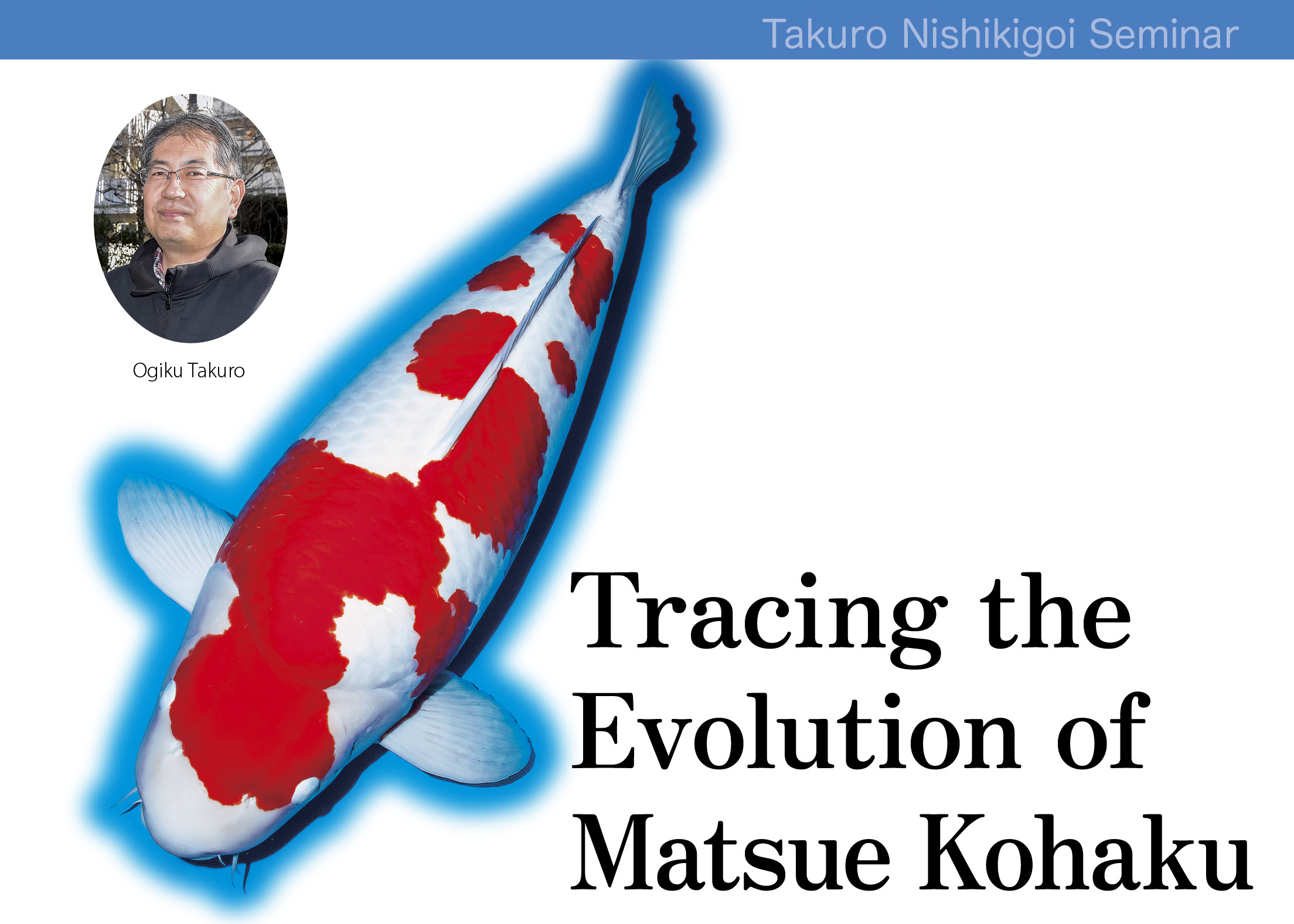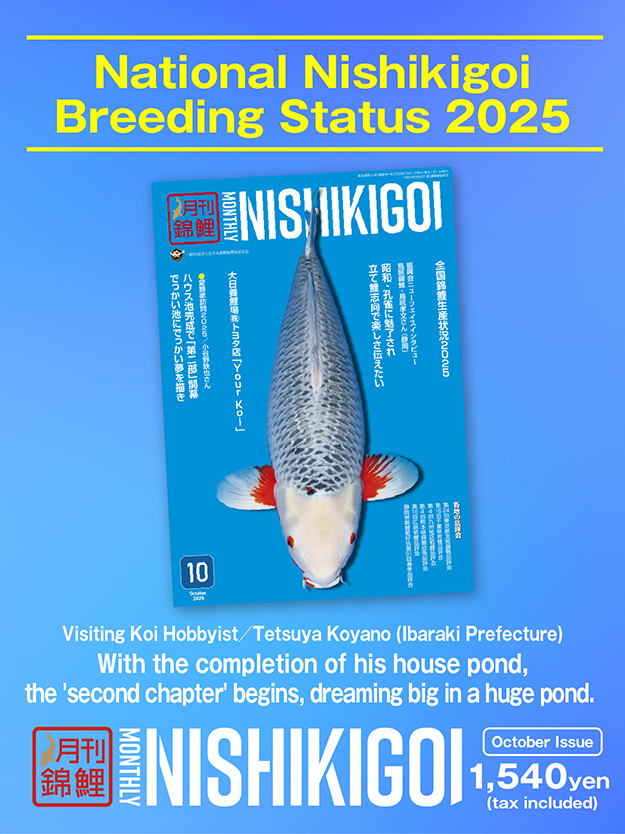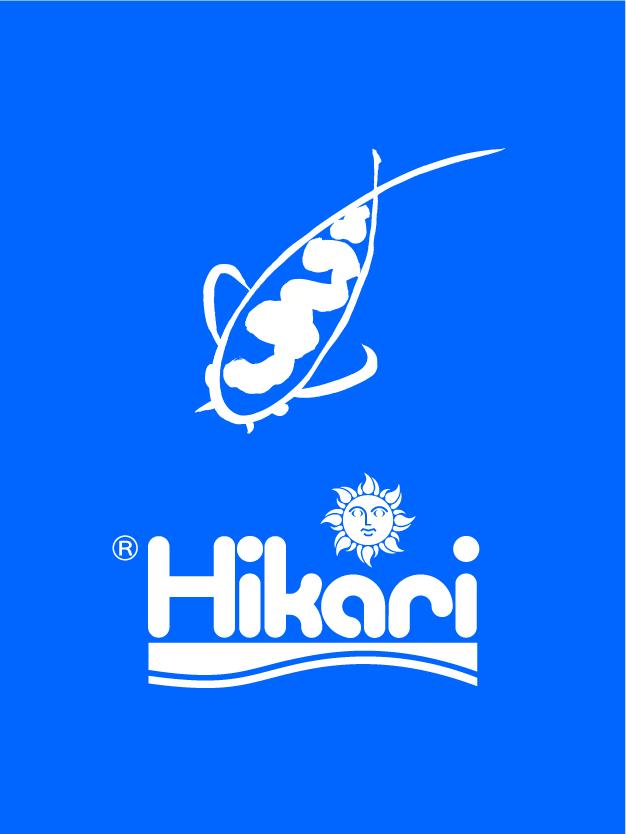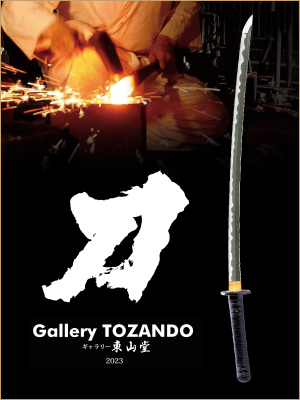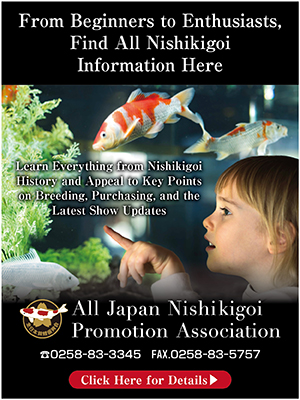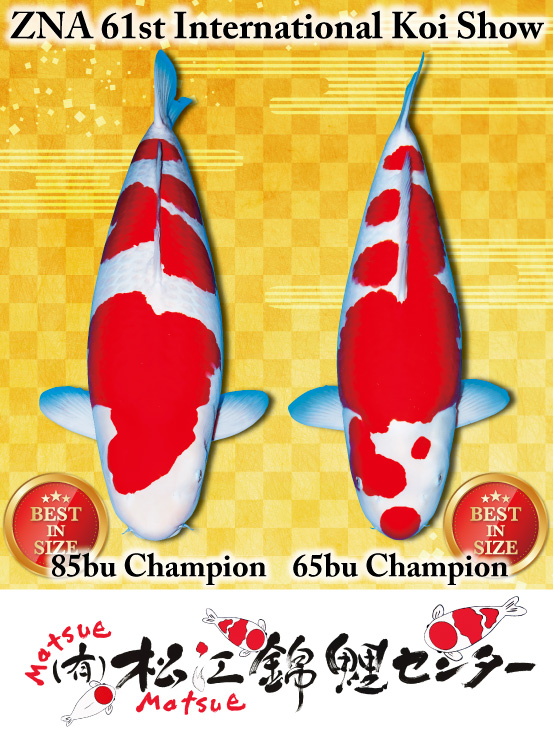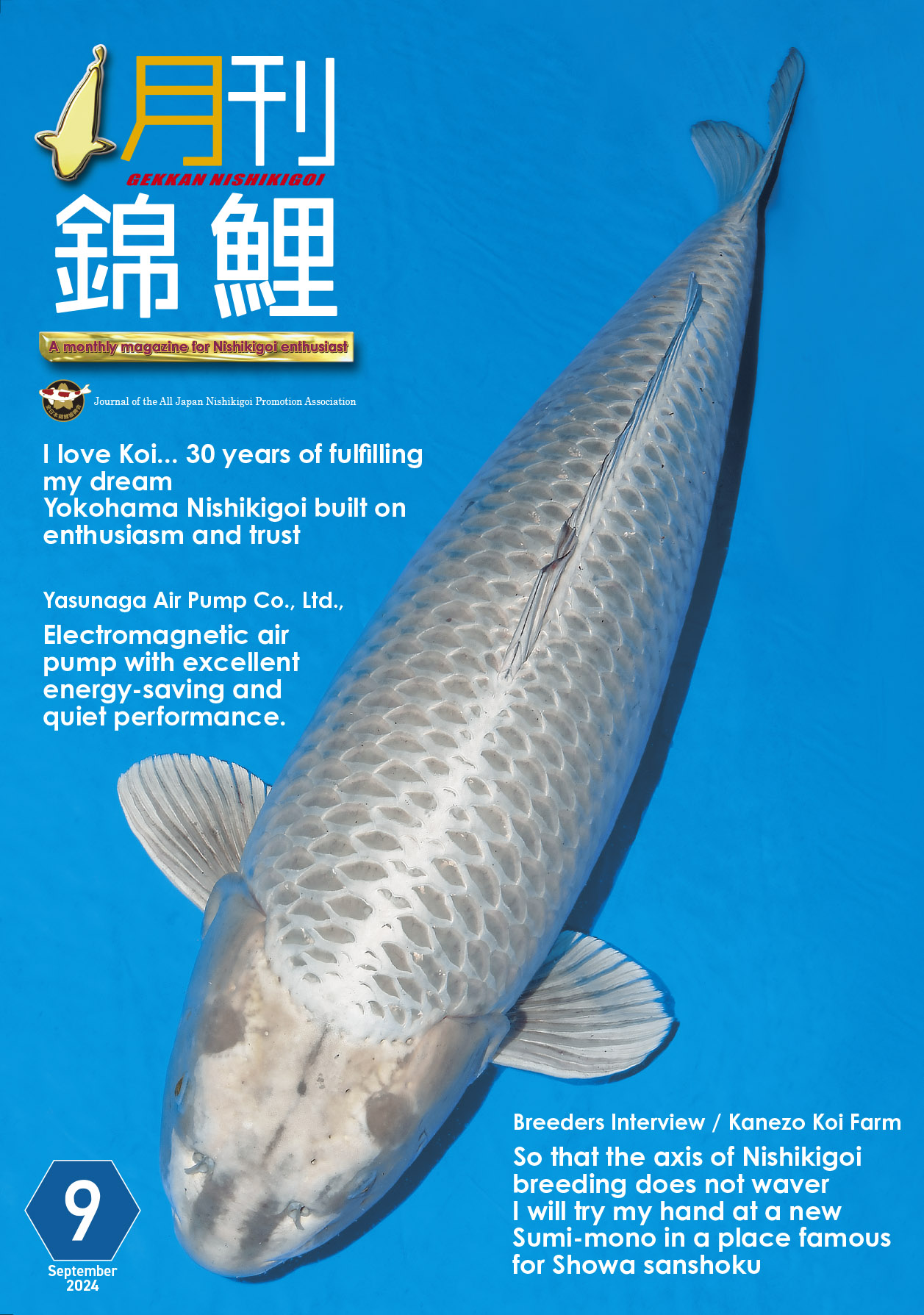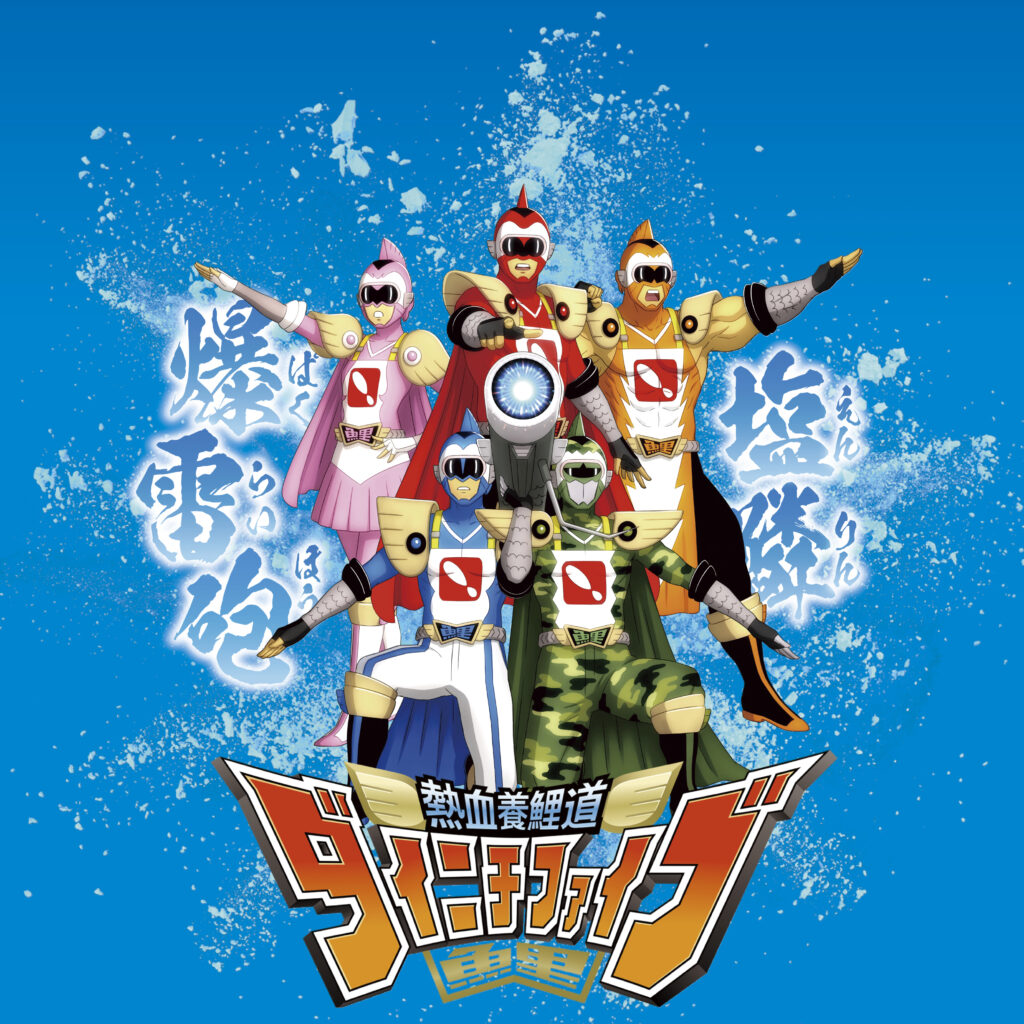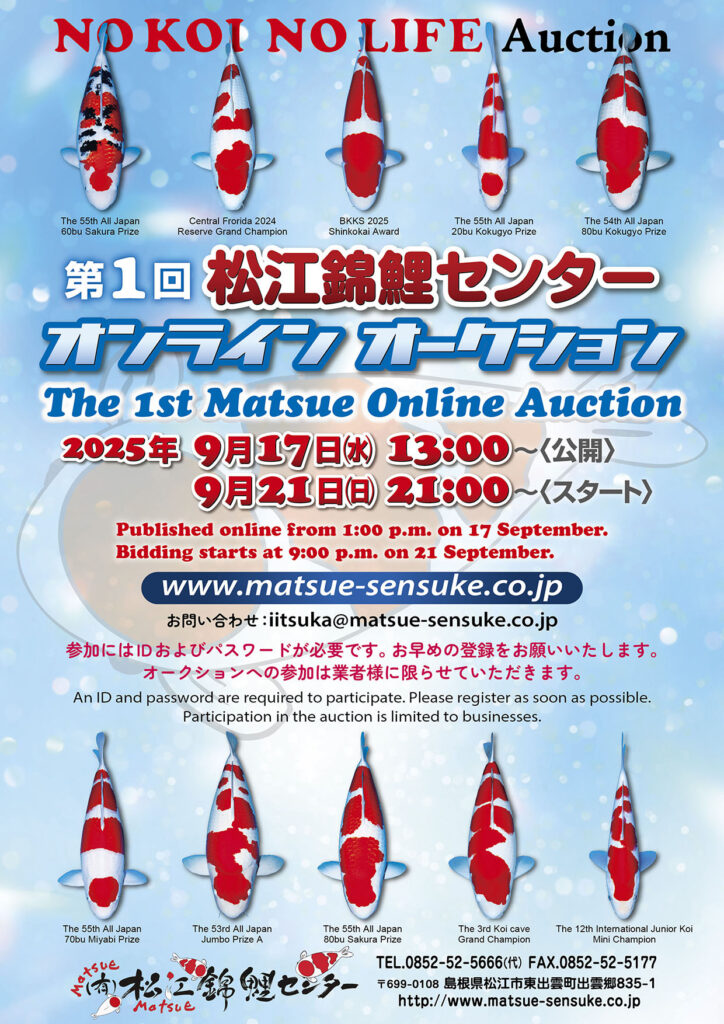―And then there is another key parent at Matsue Nishikigoi Centre, called Setsuren (㉓). What bloodline does this one come from?
Hiroaki: It comes from the Dainichi lineage. From the very first time I saw it, I thought it was an incredible koi. However, as a parent, it also had its challenges, so I struggled quite a bit when it came to using it for spawning.
―Thanks to those efforts, it has now become one of Matsue Nishikigoi Centre’s main bloodlines.
㉓/「Setsuren」
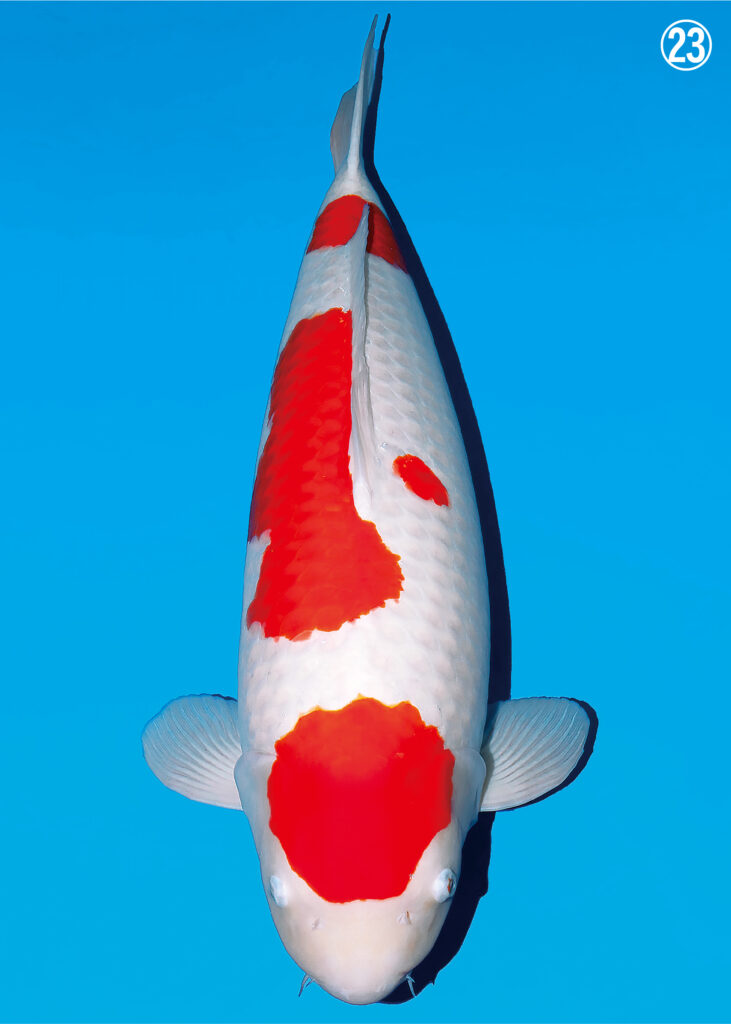
I purchased this koi when it was two years old, and the photo shows it at three years (㉔―A). It came from a pairing with the original male. I really liked it because its pectoral fins were gorgeous, so I decided to buy it. At four years old (㉔―B), its pattern was somewhat scattered, but the hi gradually tightened, and now at five years old, it has reached 85 cm (㉔―C).
㉔/Offspring of Setsuren



From Setsuren, you also get koi with a slightly chubby body type like this one (㉕―A).
Hiroaki: We split the eggs into two groups, and this one was from the male Rokusei.
―So the choice of male made the difference. This one had a lighter persimmon-red tone and looked a bit chubby, but by three years old, it had stretched out into a more streamlined form (㉕―B). I thought it was promising and kept raising it, but then it became chubby again (㉕―C) (laughs). The beni is persimmon-coloured, but since I believe this type of beni matures steadily over time, I personally like it very much.
Here’s another one, also from the earlier male pairing, shown here at two years old (㉖―A).
㉕/Offspring of Setsuren



This is how it looked at three years (㉖―B), then at four years (㉖―C), and now at five years (㉖―D). It has grown quite well, so I think it would be even better if the kiwa tightened up a little more.
㉖/Offspring of Setsuren




The next koi was purchased at the tosai event held by Matsue Nishikigoi Centre (㉗―A).
At that time, it still had the faint, indistinct look characteristic of tosai, with sashi and kiwa not yet clearly defined. However, I trusted that, since it was a Matsue Kohaku, it would turn out well, so I decided to buy it.
By the following spring, just before being released into the mud pond (㉗―B), much of the sashi had already cleared up, although it still looked a little heavy. However, after another year, the second step of sashi cleaned up beautifully (㉗―C). This is one of the great qualities of Matsue’s Kohaku. The way the blurred sashi of the tosai stage tightens and becomes defined is one of the real pleasures of keeping koi. At present, it has become razor-sharp, as if cut with a blade (㉗―D). As the hi develops fully and gains thickness like this, the beauty of the koi becomes even more striking.
㉗/Offspring of Setsuren




The koi that appeared on the cover of the February issue of Monthly Nishikigoi this year is also an offspring of Setsuren. I’m sure you remember it—it was a bit slender and, among the two-year-olds, it was probably the smallest one (㉘―A). That year, I couldn’t get the best koi, and this was the second choice. By the time it reached three years old, however, it had developed more volume around the waist (㉘―B). This one came from a pairing with a new male, correct?
Hiroaki: Yes, it was bred using a male from the 4D line.
―I expect that if this koi is raised for another two to three years, it will turn into a fascinating fish. That concludes the offspring of Setsuren.
―This time, we have been talking about Kohaku, but as a special addition, let’s take a look at the changes in a Ginrin Sanke owned by our customer, Akihiro Ota, which won a major award at this year’s All Japan Combined Nishikigoi Show.
㉘/Offspring of Setsuren


This was its appearance as a tosai when it was purchased from Matsue Nishikigoi Centre, measuring around 13 cm at the time (㉙―A). During one of our sales events, Akihiro saw it and bought it on the spot. Now, the question was—how sharp was his eye for koi…?
By the following spring, it looked like this (㉙―B), measuring about 17 cm. The hi had increased a little, and the head pattern had joined together. Sumi also began to appear. At that time, it won the Gold Prize in the 18bu category at the International Young Koi Show (2022). By the way, which parent combination was used to produce this koi?
Hiroaki: The male parent was a Ginrin Kohaku from Dainichi, while the female was a koi bred in small numbers by Mr. Takeda from Hiroshima. From that line came a parent fish carrying the Matsunosuke bloodline.
– With Matsunosuke’s blood, sumi usually appears relatively early and then recedes later, but this koi was the opposite type, with the sumi gradually emerging, which was unexpected. Since it was still small at the time, instead of raising it in the mud pond that year, we kept it in our five-ton concrete pond.
And by autumn it had reached 36 cm (㉙―C). At that point, the sumi receded, which made me wonder what to do. However, once it was confirmed to be female, we raised it in the mud pond, and by three years old, the sumi had come back sharply (㉙―D). The sumi emerged just right on the shiroji, where the hi seemed a little lacking. The head broadened, the body became fuller, and it took on a much more mature appearance. At that time, it won Overall Champion in the 55bu category at the Kanto-Koshin Nishikigoi Show (2023).
And the following year, we continued to raise it in the mud pond, where it grew to 60 cm (㉙―E). It gained considerable volume, and the sumi developed even further. The once-blurry kiwa of the sumi became sharp, and the sumi settled beautifully in just the right places. The hi also remained clean and vibrant. At that time, it won Overall Champion in the 60bu category at the Kanto-Koshin Nishikigoi Show (2024).
Then, this year’s All Japan Combined Nishikigoi Show received the 60bu Sakura Prize (㉙―F), and later also won the 63bu Sakura Prize at the All Japan Young Koi Show. It was a koi that could be enjoyed for a long time while maintaining its beauty. Even with Ginrin varieties, koi from Matsue Nishikigoi Centre can offer this kind of enjoyment.
㉙/Matsue Ginrin Sanke







